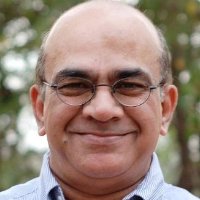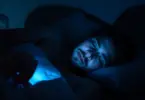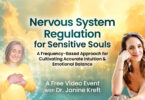By Rajgopal Nidamboor, Ph.D.
Guest writer for Wake Up World
The idea of incorporating and teaching complementary and alternative medicine (CAM) in the conventional medical school curriculum has been a raging debate for too long. The argument is not so much as to whether or not conventional medical institutions are receptive enough to integrate evidence-based CAM knowledge in their own academic or clinical setting, or whether CAM should be a part at all. What is imperative is a balanced view, because the community at large expects medical professionals to be able to provide information and guidance about the quality and therapeutic use not just of conventional medicine but also complementary, integrative or functional medicine, which most patients use some time or other.
Commentary
CAM is a term used for different complementary and alternative medical practices and medicines. There is more than definitive therapeutic and scientific evidence for a number of them, albeit skeptics often “sweep them off the ground” as being just the placebo effect (which itself can trigger genuine healing). The fact is that, any which way you look at it, a host of CAM modalities are derived from ancient sciences. Ayurveda, the Indian system of medicine, for instance, has a long history of successful traditional use.
[pro_ad_display_adzone id=”110028″]
Many skeptics likewise consider homeopathy, a growing CAM approach, as pseudoscientific “mumbo-jumbo.” They argue that it shouldn’t be taught at the university level, or in CAM protocols in conventional medical school.
There’s adequate evidence for homeopathy as a clinically effective mode of treatment for several conditions, right from allergies and skin diseases to functional disorders, such as irritable bowel syndrome (IBS), to name a few. What’s more, studies have demonstrated that homeopathy, when used as an adjuvant with conventional medicine, is more effective than treatment outcomes with the latter alone. This relates to conditions such as diabetes, hypertension, and arthritis, aside from hormone replacement therapy (HRT), among others. The question is: why shouldn’t conventional medical students and practitioners learn about such evidence and apply the Ayurvedic, or homeopathic, option to augment treatment choices and improve patient outcomes?
Well, skeptics may have their own purposes for stalling the idea; they may also ask for more evidence and expanded evidence. Yet, there could be a way out of the impasse – because it certainly won’t take long to establish review boards to identify what CAM information resources are of high-quality, evidence based, unbiased, well structured, or flawed. There are certain high-quality CAM resources already accessible; they are also a part of educational curricula and research at universities. They could be scaled up and meta-analyzed.
CAM in India, to cull a prominent example, has a rich wealth of practices, from Ayurveda to homeopathy. CAM is regulated by the government. Statistics suggests that more than 150 million people in the country, for instance, take homeopathic treatment vis-à -vis 500 million across the globe. Protocol guidelines in India also suggest that CAM’s efficacy is based on certain traditional use and evidence, especially in medical, not surgical, conditions. Research is currently under way to incorporate them with high-level evidence – to reduce the exorbitant cost of conventional medical treatment, wherever possible.
A balanced view is therefore imperative, because the community expects health professionals to be able to provide information and guidance about the quality and therapeutic use of all complementary medicines. The next step is to expand, or augment, the knowledge base of complementary health professionals on the principles, concepts, and available research evidence for all CAM treatments, including Ayurveda and homeopathy.
The best place for medical and health professionals to accrue knowledge is at the university during their academic studies. The best advantage universities possess is the close relationship that exists between research and teaching. Besides, students are better engaged and inspired by research-led teaching, especially research provided for queries while teaching. It is, therefore, not surprising that a handful of universities in the West research CAM to generate evidence-base and/or disprove its efficacy.
So, why the dichotomy to block CAM in conventional schools, as some skeptics would want? The CAM riposte is obvious: why support research, when one excludes teaching of CAM in conventional medical schools or universities? All one needs is intent, or the will to translate CAM research results into better CAM practices for everyone’s benefit. The best mode is to start teaching new conventional medical practitioners the uses, or the downside, of CAM in a given situation or condition.
At Griffith University (US), a pioneer in integrated medical teaching, evidence-based CAM education is incorporated in the curriculum. In other words, students perceive education about CAM as part of their professional degree. The university has found that CAM research and education have a moderating effect on students’ attitudes towards CAM. The training also encourages students to look at and evaluate evidence and make informed choices in the best interests of their patients and also in therapeutic outcomes.
Research too suggests that CAM education may teach conventional medical practitioners greater self-awareness and improved core competencies, such as evidence-based practice, enhanced cultural proficiency, and patient-centered care. What better place than universities and conventional research to meticulously determine what works, or doesn’t?
This has, to emphasize just a brace of exemplars, led to recognizing natural herbs, such as Gymnema sylvestre (Sanskrit,meshashringi) as an effective antidiabetic, Curcuma longa (turmeric), and certain homeopathics as anticancer remedies.
You get the point. With increasing rates of illness or disease, elder care and spiraling health-care costs, this is no time to set the clock back.
A survey conducted in Australia, to cull another example, found that 76% of pharmacists supported undergraduate CAM education, while 85% were interested in supplementary CAM education themselves. Just think of it. Do we, after all the hard work and evidence, turn our back on the consumer- or patient-driven trend towards CAM or integrative health care – or should we work together to understand, research and teach different principles, practices, and evidence – to improve treatment outcomes for patients? You be the judge!
At the other end of the spectrum, several anti-CAM bodies are paradoxically calling for an end to CAM, most notably homeopathy in the UK. They have also asked for a ban on university teaching of CAM.
This presents a gloomy view of science and a brazen plunge towards “censored learning.” The skeptics’ argument is not without rationale though. Health-care practices, they suggest, should be based as much as possible on sound scientific evidence. This is absolutely fine. Also, rigorous testing of all modalities of health care and the promotion of evidence-based clinical practice are fundamental.
This is, again, just fine. Yet, the point “evidence-based medicine” calls for dispassionate scrutiny, because the idea is a relatively new one. Most conventional medical and allied health-care practices and protocols have not been rigidly “evidence-tested” yet.
This is not all. Skeptics again argue that abolishing the teaching of CAM will strengthen, not weaken, CAM’s evidence-based clinical practice. The real fact is the powerful association between research and education will only foster better communication and also expansion of CAM research rapidly and effectively to clinicians.
To place hurdles will only undermine quality holistic health care. For open-minded conventional physicians, who have witnessed the limitations of conventional medicine, especially when treating recurrent allergies, pain, and other chronic conditions, CAM evidently fills certain gaps. CAM and dietary supplements, including nutraceuticals, are prescribed, as everyone knows, on a regular basis by many conventional physicians for chronic diseases.
There are more than a handful of cardiologists who recognize the value of omega-3 fish oils and coenzyme Q10 supplements in heart disease and also orthopedicians who are mindful of the importance of calcium and vitamin D3 supplements for bone health.
Public interest in the use of CAM has increased from 6% in 1993 to 18% in 2013. It has become clear that medical students and physicians are interested in studying CAM. In the 1980s, there was not a single CAM course taught in any medical school in the US. By the late 1990s, more than a handful of US medical schools offered courses in CAM. The percentage of medical schools in the UK offering courses in CAM, likewise, has increased – albeit the “model” is small, not uniform. Besides, the number of publications on CAM in peer-reviewed medical journals has increased dramatically from just 6 in 1963 to 4500, 50 years later.
Public interest has affected health policy, no less. The US National Institutes of Health (NIH) stablished a small administrative office for alternative medicine in 1991, with a budget of US $2 million. Its mission was to support research on CAM and spread information to professionals as well as the public. The workplace has now developed into a full-fledged center, with an annual budget of over US $200 million. This is primarily due to the time, attention, and empathy that CAM practitioners often provide to their patients.
CAM Support
Medical and other experts in the UK have recommended that CAM familiarization should be offered to conventional medical students. Yet, the fact is that not much teaching is being offered. A survey was conducted to assess conventional medical students’ knowledge of CAM, perceived training needs in CAM, their view of its role in the National Health Service (NHS) and current teaching given. Analysis of data from a questionnaire given to medical students and direct questioning of senior academic medical school staff in Cardiff and Swansea Medical Schools were carried out. The participants comprised 78 first-year medical students in the undergraduate entry program in Cardiff and 58 first-year medical students from the graduate entry program in Swansea.
Senior academic medical school staff were asked about current CAM teaching. Results revealed that 32% of undergraduate entry students (UGES) had previous knowledge of CAM as compared with 51% of graduate entry students (GES). 62% of UGES believed that they should be taught CAM compared with 94% of GES. 31% of UGES thought that CAM has a role in NHS compared with 50% of GES. None of the students had received teaching about CAM and little formal CAM teaching is being currently included in the curricula at each site. A majority of medical students in Wales said they would like to receive CAM teaching, while a significant number of students supported a role for CAM in NHS.
[pro_ad_display_adzone id=”110030″]
While a number of medical schools in the US are willing, or continuing, to integrate CAM into conventional medical education, the general consensus is that the experience of CAM training has gone beyond the useful objective of acquainting medical students with it. The experience at Georgetown University School of Medicine (US) indicates that integrating CAM into the curriculum helps advance several goals of conventional medical education, such as critical analysis of evidence, ability to manage stress, build compassion and empathy, improve treatment outcomes, as well as raise students’ satisfaction and skills to cope with medical education.
Most conventional physicians and academicians agree that it is not their objective to train medical students as CAM practitioners, but to actually acquaint them with CAM principles and its common modalities in order to meet patients’ needs with CAM, especially in conditions that may not respond to conventional medical treatment. Besides, a school of thought has also formulated recommendations, which are consistent with suggestions of a recent report from the Institute of Medicine (IoM) on CAM usage in the US. This could be used as a blueprint, or call for action, elsewhere:
- Students should be taught “appropriate” medicine which helps patients. The question should not be so much on the method, but on “open-minded” evidence, safety, and effectiveness.
- Focus on the required curriculum. Customize what every student needs to know about CAM and make it requisite.
- Create opportunities for interdisciplinary activities; build collaborative initiatives with accredited CAM institutions.
- Students should hear directly from CAM practitioners about the philosophy of CAM. However, CAM practitioners should distinguish “beliefs” from hard medical and clinical evidence.
- It is essential that efforts be extended beyond the classroom to staff and faculty of the institution. This may take the form of institution wide seminars, continuing medical education (CME), and faculty development classes.
- Include “experiential” CAM components which can be powerful and also supplement “knowledge” aspects in an insightful manner.
- Use CAM to teach “rules of evidence.” Even in the most cynical environment CAM materials present a great opportunity in critical analyses of data.
- Familiarize future physicians and patients with CAM and the effective benefits of holistic, integrative medical education, care, and treatment.
It is reported that 40% of US adults, for example, use some form of CAM – from nutrition, meditation, and homeopathy to acupuncture, traditional Chinese medicine (TCM), therapeutic hypnosis, Ayurveda, reflexology, and Reiki. It is not just popularity alone, but the “patient-first” approach of CAM that is attracting a number of conventional medical schools “to supplement medication with meditation” across the globe.
The Consortium of Academic Health Centers for Integrative Medicine (CAHCIM; US) encourages the spread of CAM education. It was founded over 12 years ago after an initiative by 8 academic medical centers; it has 51 medical school members today. Such proponents say that CAM educates health-care professionals to look for underlying systemic imbalances as a cause of illness rather than merely focus on treating symptoms alone and, when possible, to correct health issues with mind-body techniques and lifestyle changes.
While the traditional study of drugs and surgery still dominates class discussion in conventional medical schools as regards CAM, several students, including nursing students and staff, want to add complementary methods, because they know their future patients are going to be using them.
Many factors highlight the rationale for greater attention to CAM in undergraduate medical education (UME). They are, in précis:
- The widespread use of CAM by patients and their projected increase over the next decade.
- A majority of CAM users continue to use conventional medicine, creating potential safety risks due to medicinal interaction effects.
- Only a minority of patients reportedly disclose CAM use to their conventional physicians.
- Patients report wanting to receive information about CAM from their physicians
- The growing evidence base for certain CAM therapies.
While a handful of conventional medical schools are doing well in advocating CAM methods that have withstood scientific scrutiny, even as they research other methods that patients regularly use, critics slam the credo saying that the curriculum has “a prejudice in favour of CAM, even when there is no reliable evidence for some practices.”
However, many conventional medical students believe that they know their patients benefit better when they understand CAM; besides, they see adequate value for it in their own lives. This is because natural therapies, like yoga, help them to handle the stress and pressures of medicine as a profession and also to take better care of themselves and, in the process, be better physicians.
Most students also agree that studying CAM gives them empathy vis-à -vis “how patients choose to approach their health.” As a Texas medical student said in a newspaper interview, “It’s ironic … as medical students, we approach our education as scientists who make decisions on evidence and fact. But, learning about CAM has really led me back to the humanistic part of medicine.”
The Loma Linda University School of Medicine in California (US) has an in-depth elective on functional medicine for chronic conditions. The approach is suggested to help manage – even reverse – diabetes, for instance, with exercise and plant-based diets rich in whole foods, along with conventional medications.
The integrative medicine faculty at the University of Arizona (US) has undergone a curriculum overhaul with a growing body of research supporting some CAM remedies, especially nutrition and other treatments having limited risks. All students, in classes across the curriculum, get an understanding of the role of nutrition and recognized alternative remedies in healing and prevention, including the body’s innate ability to heal itself.
Faculty members, who have gone through the full-fledged, two-year fellowship program in integrative medicine, often give students more than an insightful peek at how they may eventually incorporate CAM.
Picture this: A recent survey found that only 27% of US medical schools currently meet the minimum target of 25 hours set by the National Academy of Sciences (NAS) for class time on nutrition. This is obviously far too inadequate, any which way you look at it.
There are also electives available, in some medical schools, on the importance of caring for the mind, body, and spirit of the conventional physician as well as patients. Students not only learn meditation, yoga, and tai chi, for example, but also practice them to de-stress. As one conventional physician, who trained in CAM, said, “To be good healers, we need to facilitate our own wellness – that it is all part of healing the patient.”
Academicians and educators at the University of Maryland School of Medicine (US), to highlight another example, are similarly incorporating a discussion of integrating CAM therapies in the basic physiology and therapeutics curriculum. This is because there is reasonably good evidence that some CAM treatments are helpful, safe, and also effective. The trend is catching up with a handful of conventional medical schools in Asia, India, and elsewhere.
Conclusion
The point today, or in the future, is not so much whether students who learn about CAM approaches ever incorporate CAM in their practice. The big point is that they certainly stand to gain from viewing medicine in a more holistic manner, not with dark glasses. As one conventional physician who took the University of Arizona elective recalled, the foremost dividend that he integrated in his clinical practice was “a resolve to spend time getting to know his patients as people.” This sums it all as to why CAM should be a part of the curriculum in conventional medical schools.
References:
- Baugniet J, Boon H, Ostbye T. Complementary/alternative medicine: comparing the view of medical students with students in other health care professions. Fam Med. 2000;32(3):178–184.
- Brokaw JJ, Tunnicliff G, Raess BU, Saxon DW. The teaching of complementary and alternative medicine in US medical schools: a survey of course directors. Acad Med. 2002; 77(9):876–881.
- Chaterji R, Tractenberg RE, Amri H, Lumpkin M, Amorosi SB, Haramati A. A large sample survey of first and second-year medical student attitudes toward complementary and alternative medicine in the curriculum and in practice. Altern Ther Health Med 2007;13(1):30–35.
- Greenfield SM, Innes MA, Allan TF, Wearn AM. First year medical students’ perceptions and use of complementary and alternative medicine. Complement Ther Med. 2002;10(1):27–32.
- Kligler B, Maizes V, Schachter S, et al. Core competencies in integrative medicine for medical school curricula: a proposal. Acad Med. 2004;79(6):521–531.
- Konefal J. The challenge of educating physicians about complementary and alternative medicine. Acad Med. 2002;77(9):847–850.
- Kreitzer MJ, Mitten D, Harris I, Shandeling J. Attitudes toward CAM among medical, nursing, and pharmacy faculty and students: a comparative analysis. Altern Ther Health Med. 2002;8(6):44–47,50–53
- Laken MP, Cosovic S. Introducing alternative/complementary healing to allopathic medical students. J Altern Complement Med. 1995;1(1):93–98.
- Levine SM, Weber-Levine ML, Mayberry RM. Complementary and alternative medical practices: training, experience, and attitudes of a primary care medical school faculty. J Am Board Fam Pract. 2003;16(4):318–326.
- Natalie T, and Anona B., Complementary and alternative medicine familiarization: what’s happening in medical schools in Wales? Evid Based Complement Alternat Med. 2010 June;7(2): 265–269.
- Owen D, Lewith GT. Complementary and alternative medicine (CAM) in the undergraduate medical curriculum: the Southampton experience. Med Educ. 2001;35(1):73–77.
About the author:
 Rajgopal Nidamboor is a board-certified wellness physician, fellow of the College of Chest Physicians (FCCP), member of the Center of Applied Medicine (M-CAM), writer-editor, commentator, critic, columnist, author, and publisher. His special interests include natural health and wellness, mind-body/integrative medicine, nutritional medicine, psychology, philosophy, and spirituality. His focus areas also encompass contemporary research and dissemination of dependable information for all people concerned about their health.
Rajgopal Nidamboor is a board-certified wellness physician, fellow of the College of Chest Physicians (FCCP), member of the Center of Applied Medicine (M-CAM), writer-editor, commentator, critic, columnist, author, and publisher. His special interests include natural health and wellness, mind-body/integrative medicine, nutritional medicine, psychology, philosophy, and spirituality. His focus areas also encompass contemporary research and dissemination of dependable information for all people concerned about their health.
Rajgopal feels that it is increasingly gratifying to see most people, including physicians, thinking outside the box – especially in areas such as natural health, where the body knows best to heal itself from the inside out. His published work includes hundreds of newspaper, magazine, Web articles, four books on natural health, two coffee-table books, a handful of e-books, and a primer on therapeutics. He lives in Navi Mumbai, India.
Connect with Rajgopal Nidamboor at health-prism.com.
This article was first published in Townsend Letter – The Examiner of Alternative Medicine, December 2014. Reproduced with permission.
[pro_ad_display_adzone id=”110027″]







